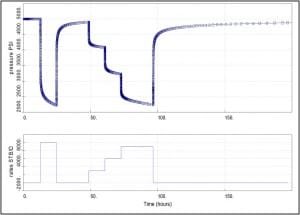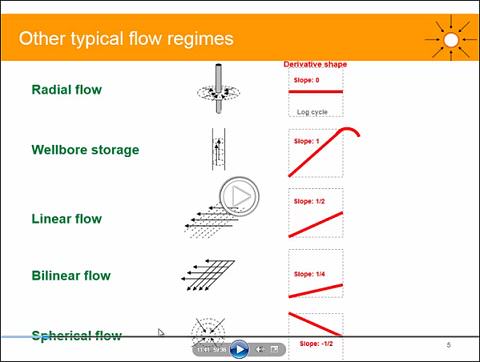Pressure Transient Analysis
Also called Well Test Interpretation or Well Test Analysis.
Pressure transient analysis is mainly used for reservoir characterization in Exploration and Appraisal stage. During an exploration well test, hydrocarbon is produced for the first time and flared via a temporary facilities (platform rig at sea) to evaluate the potential and reserves of an oil and gas field. This involves tens of millions of dollars per operations, with high safety and environmental risks. A poorly performed well test could lead to a disastrous field development and huge financial losses up to hundreds of millions of dollars.
While more value could be extracted by applying modern well test analysis tools and techniques, pressure transient analysis can also be used to monitor the well and reservoir performance and understand the causes of performance deviation. For fractured wells, it will help to evaluate the actual fracture dimension and obtain permeability and initial pressure. For water injectors, pressure transient analysis will help to ensure no excessive frac growth, cap rock integrity and water containment in the reservoir.
For more information, please download the following document:
Well Testing And Pressure Transient Analysis
Theory behind pressure transient analysis
Pressure transient analysis is also used in production to protect the base oil and gas production and optimize new well delivery.
Pressure Transient Analysis in Producing Fields
For more information or for a discussion on this topic, please don’t hesitate to contact us.
Pressure Transient Analysis
2 Pressure Build-up Tests (PBU)




